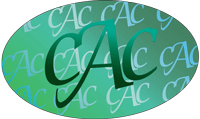FINEST GRADED BY PCGS ULTRA RARE BRAIDED HAIR HALF CENT PROOF-66 RB CAC (TONED)
1856 1/2C, RB PR66RB
- Listing Type:
- This item is Cataloged Online in my Personal Coin Collection
- Certified by:
- PCGS

- Certification Number:
- 30773131
- Condition or Grade of Item:
- Proof-66 RB
- Visitor Count:
- 271 views
Item Description
USA Coin Book Item ID Number:
133280
Coin Condition:
Proof-66 RB
Certified By:
PCGS 

Certification Number:
|
The most important coins of this design are the Proof strikings, which are known for every year that the design was struck, except 1853, when no Proof strikings are said to have been made for the half cent denomination. In fact, the majority of dates for the series (1840 to 1848 and 1852) are only known as Proof strikings, either as originals, or restrikes. The current consensus of identifying originals versus restrikes is relatively easy, although a magnifier is usually needed. Restrikes are said to have been made by Mint Director James Ross Snowden, sometime around 1858 to 1860. In this period a large number of rare and valuable coins were created, along with an enigmatic number of patterns, which would continue to grow over the next decade. The key factor for identifying the restrikes can be found on the reverse, in the size of the berries on the wreath. The reverse die that struck the restrikes was made in 1856, and featured minutely small berries, especially compared to those of the original strikings. Walter Breen, in his encyclopedia of the series, goes in detail to the various reverse dies (he identified three different, one for the originals and two for the restrikes), but except by specialists, the difference between his "B" and "C" reverses is hardly noted. The most interesting fact that can be derived from his research that some restrikes were also made from the original reverse die, possibly the last restrikes made, but all are extremely rare. These are best identified by the repolished appearance of both the obverse and reverse, and dates identified by Breen include 1840, 1843, 1845, 1847 to 1849 and 1852.
|





